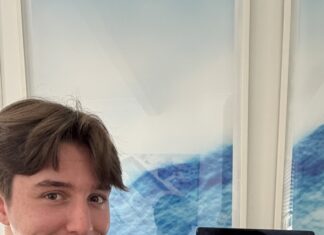Andrew Mathieson
ARTHUR Reed is living the dream.
After 50 years of photography, he can afford to kick back on his own tropical island with his wife and grown-up children.
It’s a pay-off for his hard work and a touch of ingenuity in developing Arthur Reed Photos in the darkroom of his Torquay home laundry.
But Arthur’s little piece of Fijian paradise is more than just palm trees and sandy beaches.
His three-month breaks boating between the sun-drenched islands is tempered by keeping tabs on the holiday resort he unintentionally built more than 30 years ago.
“My staff think our family’s life is one long holiday,” Arthur laughs.
“When we’re home the people in Fiji think we’re having a holiday in Australia and when we’re over there the people think we’re having a holiday in Fiji.
“Really, to relax in Fiji we have to take off in the boat. We took our motor cruiser over to the island from Queenscliff in 1983 and we’ve still got it there.”
An idyllic family holiday – the Reeds’ first in six years – to Fiji in 1973 started a love affair that has never abated.
Arthur recalls discovering several uninhabited islands up for lease.
After Arthur built traditional wood-and-straw bures on one of the islands to visit every year, the Fijian trust authorities later insisted the land was now up for commercial sale only.
So the four huts became 10 and an island resort fit for a picture-perfect postcard was born.
“We’ve had a lot of guests come back again and again,” Arthur boasts.
“Some have accumulated 100 nights on the resort and one celebrated 200 nights recently. When that happens and people say it’s been great you do think all the hard work has been worth it.
“And the same in the photo business – I’ve been getting cards saying congratulations on 50 years. I’ve even had people say ‘I was one of the first weddings you did’, so I can now look back and think it hasn’t been a bad effort.”
The man synonymous with nearly every bounded set of Geelong school portraits over the past half a century admits he winged it during the early days as a professional photographer.
“When I started I really had no idea, I have to admit, in setting out plans for the next five or 10 years, let alone 50,” Arthur sighs.
After starting out in the industry selling equipment for Camera House, Arthur was sent out to snap photos at debutant and function balls in Geelong’s Palais Royal.
After joining Geelong High School’s camera club a few years earlier, then-22-year-old Arthur decided to approach his old school with little more than a basic 35mm camera, a few 36-exposure films and a little blackboard with chalk in hand.
“But if you got 500, 600 or even 800 people to photograph in a school, that’s an awful lot of 36-exposure films,” he observes.
“It was a bit difficult loading up enough film all the time and having all this film to process.”
So Arthur ordered the latest American camera, which took a 100-foot length of film and could shoot hundreds of students in one roll. He found that leaving the wet emulsion untouched while processing the film was the only stumbling block.
To avoid making contact with the developing film, Arthur was forced to design what notoriously was known among peers as a “horizontal birdcage”.
“We made it from bits of wood, dowelling and plastic and experimented,” he remembers.
“We were just being very practical and it worked well.
“In America they had automatic processing machines that simply clipped the film in and feed it through all the chemicals so it would come out the other end dry. But we didn’t have the wherewithal nor the volume to be able to support that sort of expenditure at first.”
Explaining the changes and expansion of his Grovedale photographic laboratories– the third home of Arthur Reed Photos since 1978 – brings a smile through Arthur’s bushy, snow-white beard.
No longer the business’s photographer behind the lens, he strokes his beard when pondering the number of photos snapped.
“Personally, I guess there would be hundreds of thousands I’ve done alone,” he calculates.
“Over the years we’ve done millions and millions because the company takes nearly 300,000 photographs a year.”
Get the latest news to your email inbox FREE!
REGISTER






